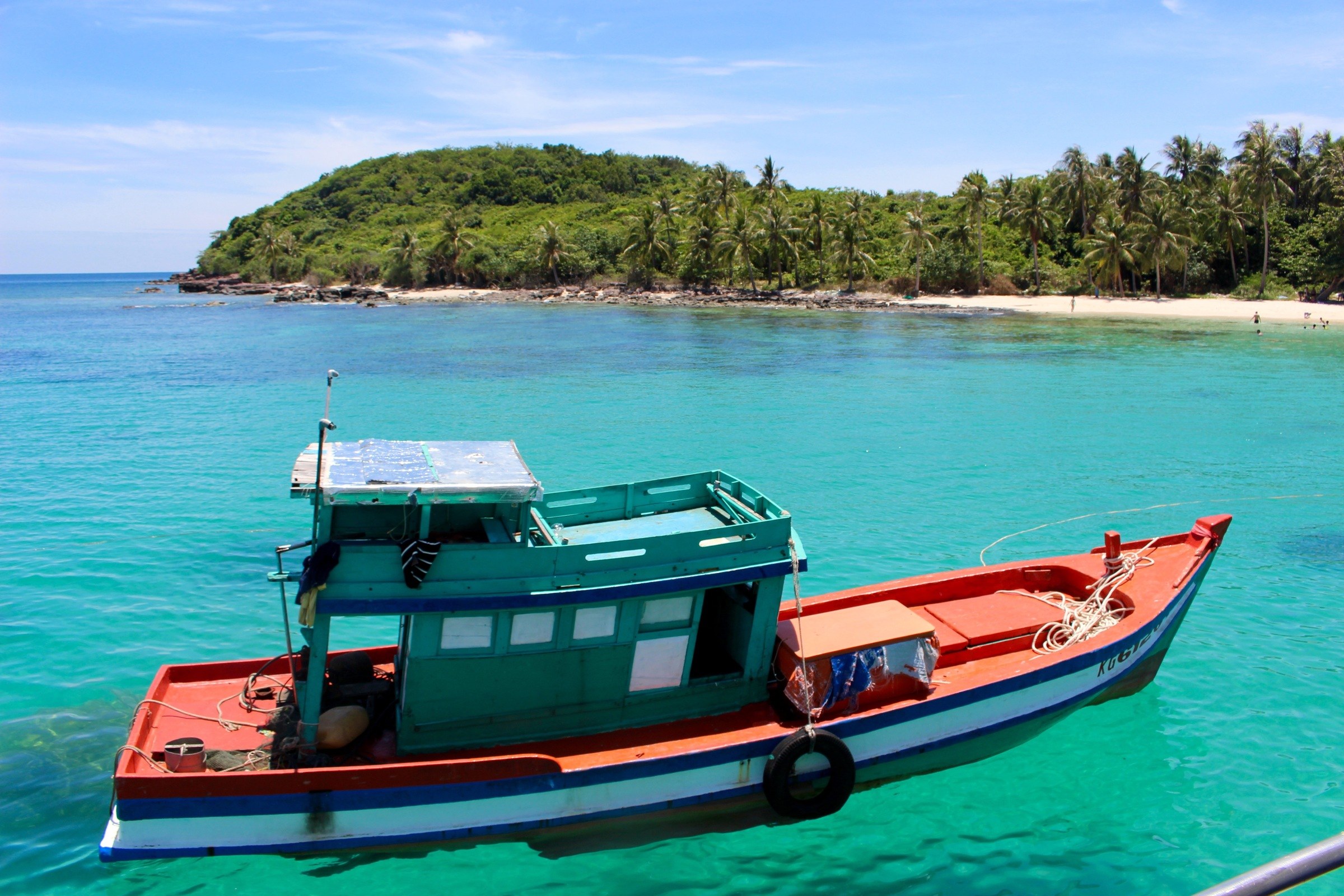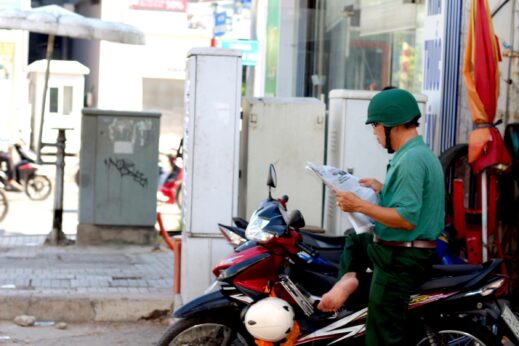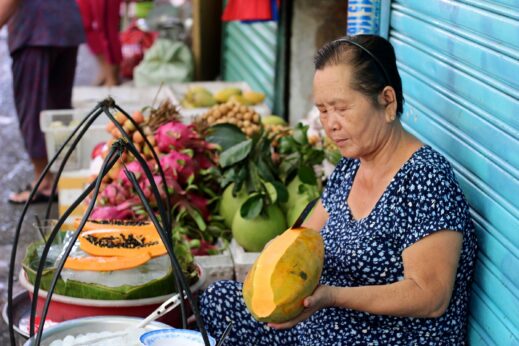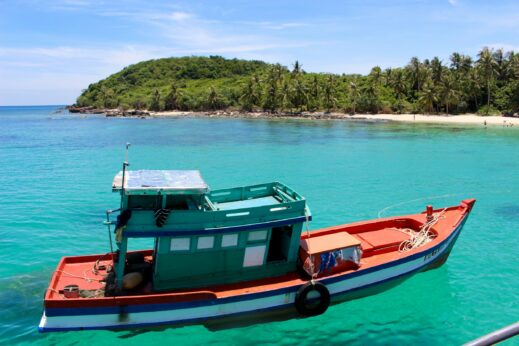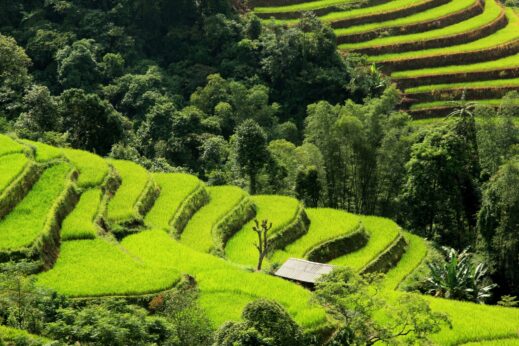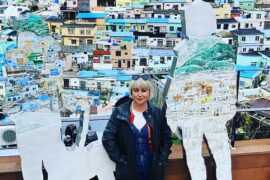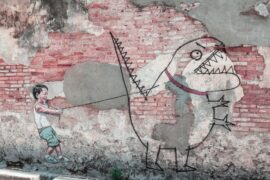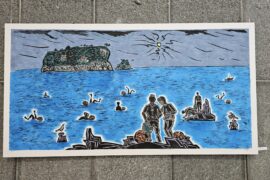As a long thin country bordering China in the north, snaking the length of Laos and Cambodia and jutting into the Gulf of Thailand in the south, Vietnam’s diverse topography and culture is perfect photography fodder for pros bolstering their portfolio and snap happy travellers documenting their holiday.
Street scenes
The street scenes in Vietnam’s major cities – Hanoi in the north and Ho Chi Minh City in the south – are continually changing. See city life tick by: ladies in conical hats sling bamboo baskets of produce over each shoulder, whole families balance precariously on mopeds, men chat animatedly at open air barber shops and groups tuck into lunch on impossibly low stools.
Explore the city streets on Best of Vietnam
Food
Wherever you travel in Vietnam, you won’t be short of a good meal or two. Get a good overview of the food scene in a short amount of time on a Vespa street food tour; snap frenzied activity in open kitchens, countless authentic dishes, and locals slurping pho well into the evening. We all know a good food photo makes you hungry, and luckily, you’ll try everything as you go. Inspiring and delicious.
In Southeast Asia, locals buy fresh fruit and vegetables every day from the market. Meet a guide early in the morning and explore the big citys’ back streets for the most authentic markets.
Try a bit of everything on Gastronomic Trails of Vietnam
Beach and coastal
Vietnam’s serene beaches are a world away from the chaos of the cities. For that sun, sea, sand and palm tree shot, travel to the inimitable Con Dao islands, or the An Thoi archipelago (pictured: off the coast of Phu Quoc island). Pack your waterproof camera too – the area teems with coral and marine life.
The vast limestone islet studded Halong Bay is the subject of countless dreamy photographs, but the area does mist up depending on the time of year – expect early morning, ethereal cloud shots rather than crystal clear horizons.
Take to the beaches of Phu Quoc on Vietnam in Style
Architecture
My Son (not far from Hoi An)
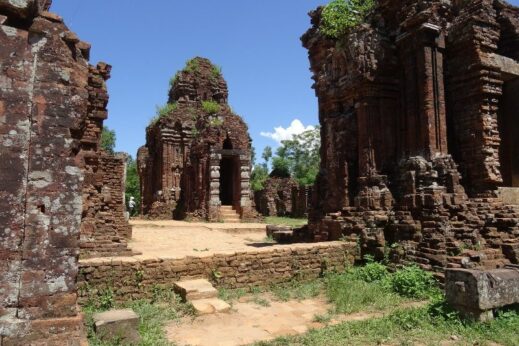
If you’re fascinated by ancient temples or colonial architecture, you won’t be disappointed in Vietnam. Ancient history buffs should make a beeline for My Son (capital of the Champa Kingdom) – some of these crumbling Hindu temples date back to the 4th century.
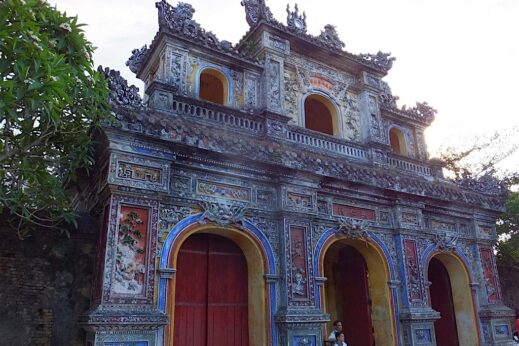
Travel to the wonderfully preserved 19th-century imperial citadel in Hue to photograph its elaborate gate, quaint palace garden and looming flag tower.
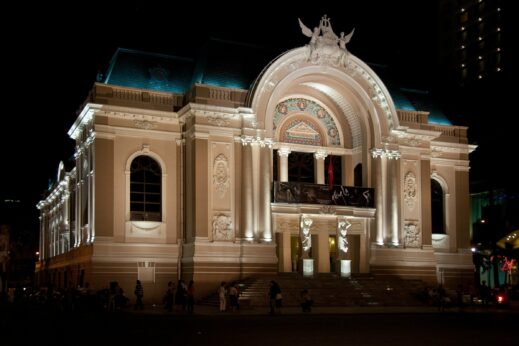
In Ho Chi Minh City, the characteristically 1960s design of the Reunification Palace contrasts with the colonial French post office, opera house and Notre Dame Cathedral. For something really different, take a trip to nearby Cu Chi Tunnels.
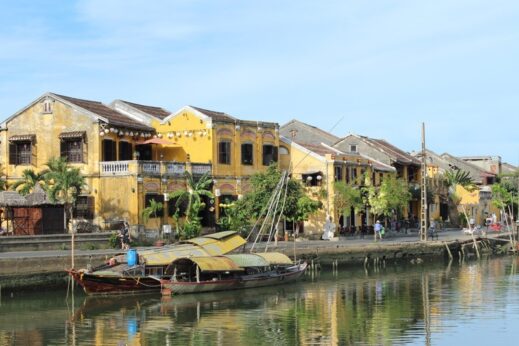
Arguably the finest place to take photographs of architecture: the pretty riverside town of Hoi An. This former international port has an amalgamation of architectural styles with narrow timber houses, a Japanese bridge, rustic ochre walls and French colonial buildings with balustraded balconies.
Go back in time on Architectural Highlights
Countryside
Rice terraces
Thanks to the green season, Vietnam’s countryside is awash with healthy green hues, and its terraced rice paddies are one of the country’s most enduring images; hike through the misty mountains of Sapa or Ha Giang in northern Vietnam to see them. At high altitude, these areas offer respite from humidity. In fact, at certain times of the year it’s worth packing a jumper! For more information about weather in Vietnam, visit When to Travel.
Limestone
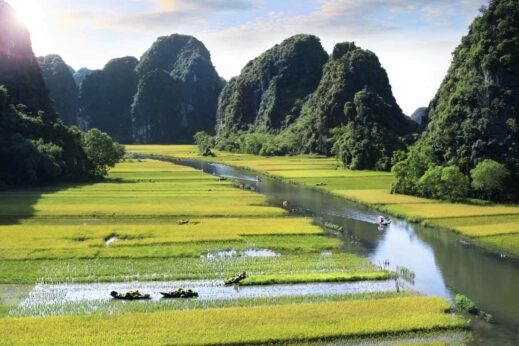
To capture the country’s rugged karst scenery, take a sampan ride in Ninh Binh. Sometimes likened to popular Halong Bay, the limestone pinnacles here rise on dry land either side of a winding river.
Caves
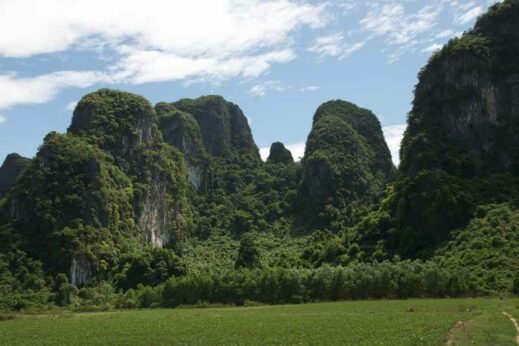
While illuminated wooden walkways in some of Phong Nha National Park’s caves may prove disappointing in pictures, this vast network hides otherworldly expanses with turquoise pools, thick forests and hollows where streams of sunlight escape through the gaps.
Get beyond the cities on Vietnam Adventure
Villagers
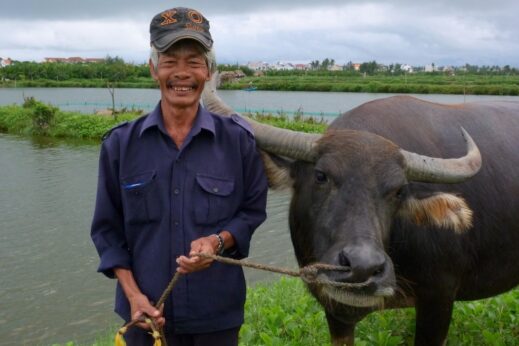
This section should come with a gentle proviso: local people are not tourist attractions. While it should be common sense, all too often misguided tourists impolitely invade the space of orange-robed monks while they collect alms and trudge through villages to take photographs of communities without attempts at interaction.
That’s not to say, ‘don’t go’. Far from it. Travelling to rural areas and learning about religious traditions, ethnic minorities and cottage industries is extremely rewarding, but take time for cultural exchanges. Even with language barriers, a smile can go a long way. Do a bit of research before you go and show an interest. One of the best ways to make the most of your time in a rural area is by travelling with a local guide; having often grown up in the area, they have invaluable knowledge.
A night or two at a homestay is another good option; by helping with daily life or sitting together for a home-cooked dinner you’ll have a better chance to get to know your hosts and take authentic photographs.
Get involved on Hands On Cambodia and Vietnam
Festivals
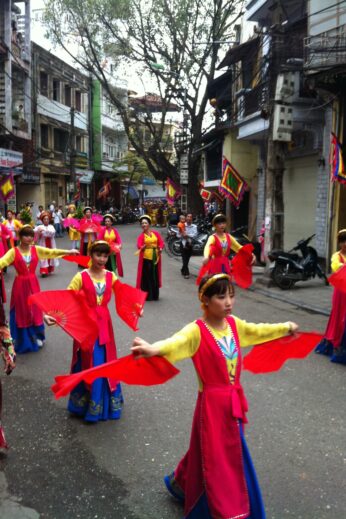
At festivals and national holiday celebrations, you’ll see colourful outfits, try local food and learn about the country’s traditions. Bear in mind that some attractions may be closed and hotels very busy, so plan your visit carefully. Also, in Vietnam they use the lunar calendar, so dates can change year on year. For more information, visit When to Travel.
See yourself inspired by luminous green rice paddies, buzzing cities or ancient temples? Get in touch with our team to plan your holiday to Vietnam.
